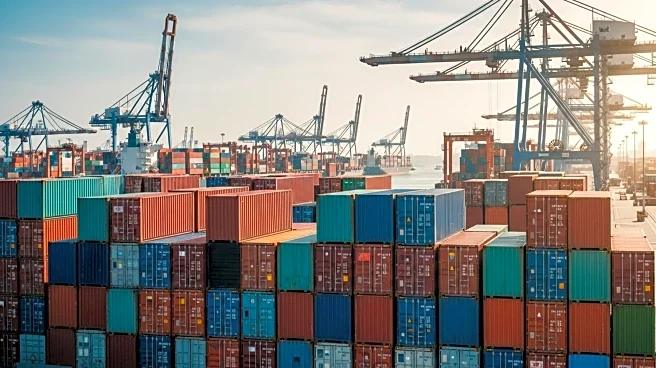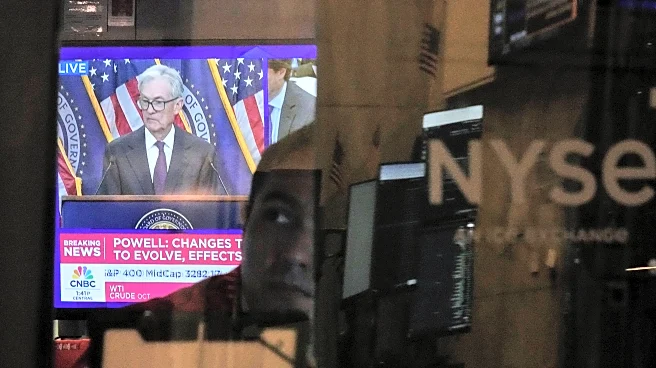What's Happening?
The demand for container vessels is increasing in trade lanes not bound for the U.S., prompting a revised growth forecast for ship demand in 2025 to 4.5-5.5%. This growth is driven by resilient cargo volume growth in regions outside North America, despite weaker U.S. import volumes. North American import volumes have seen negative year-on-year growth since April, with a forecasted contraction of 2% in 2025, but are expected to return to growth in 2026. Global cargo volumes are projected to grow by 2.5-3.5% in both 2025 and 2026, particularly in Asian exports to regions like Sub-Saharan Africa, South & Central America, and Europe & Mediterranean. The demand remains elevated due to alternative routing via the Cape of Good Hope, as Suez Canal transits are significantly reduced due to security concerns in the Red Sea.
Why It's Important?
The shift in container vessel demand highlights the impact of U.S. tariffs and geopolitical tensions on global trade patterns. As U.S. import volumes decline, other regions are experiencing growth, indicating a diversification of trade routes and partners. This trend could lead to changes in global supply chain dynamics, affecting shipping companies, exporters, and importers. The increased demand for vessels in non-U.S. trade lanes suggests a potential rebalancing of global trade, with implications for freight rates and shipping costs. Additionally, the reliance on alternative routes due to security issues in the Red Sea underscores the importance of geopolitical stability for international trade.
What's Next?
Market conditions and freight rates are expected to weaken further in 2025, with potential changes in time charter rates and second-hand ship prices anticipated in the fourth quarter. The forecast for stable supply/demand growth suggests that freight rates could stabilize in 2026. Shipping companies and stakeholders will need to adapt to these evolving conditions, potentially exploring new markets and routes to mitigate risks associated with tariffs and geopolitical tensions. The ongoing discussions between shipping companies and governments regarding security and trade policies will be crucial in shaping future trade dynamics.











